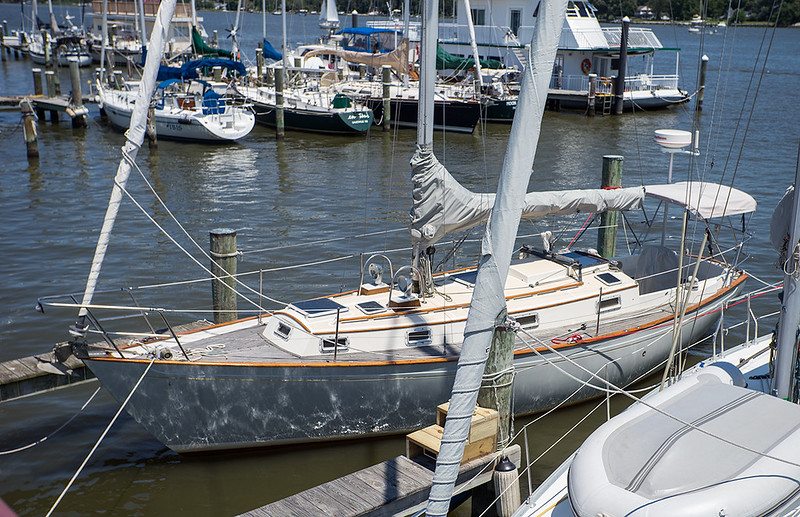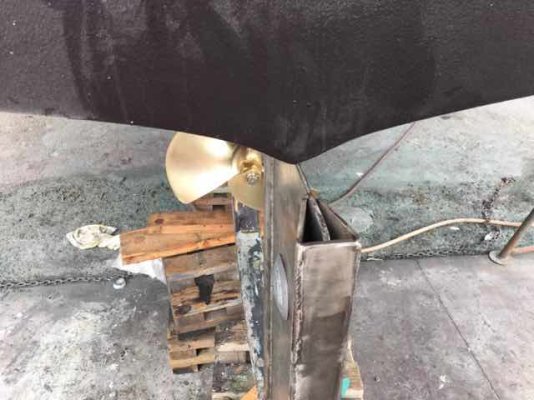Not all of this will apply, but we just came back from a visit to the Cheaspeake Bay Maritime Museum in St. Michaels which coincided with the annual Wattermen's Appreciation Day festivities.
And of course that include the boat docking contest. They apparently don't have the videos posted yet (that I can find) but they did have a drone up filming, so they'll be coming...
Sundays course was from a starting chute, full power backwards into open water, full power 270° turn to starboard, full power astern into the target slip, 4 lines on pile, last line stops the clock. Single screw workboats in three classes, small under 36', medium 36-40', large over 40'. The shortest time I remember from Sunday was 24.99 SECONDS!!! A 14-year-old young man was seriously in the running. One of the boats NOT in Sundays competition this year is a relatively huge 52' and that skipper told me yesterday his best time at a different venue (similar "course" at Rock Hall) has been around 30 seconds.
In the meantime, some of the older videos here will illustrate:
Videos — Chesapeake Cowboys
The contest situation is not completely similar to what we've been discussing here for several reasons, one being that many of us here don't like to bash the boat around too much, and we often have ladders and so forth.
The contest is for workboats with SERIOUS rub (crash) rails. 15' (or larger) open cockpits. Controls in the cockpit.
Target piles that are sacrificial, etc. Pre-made "dock lines" with rigid hoops for tossing over (lassoing) the target piles. Operator not averse to falling into the water to get that last "dock line" on a pile (there's a "safety seat" guy on board to recover from that.) And so forth.
But one factor that does become obvious is that speed sometimes works... and sometimes "more power!" is exactly the right thing to do.
Something that wasn't obvious in the actual competition was the milling around of about 30 workboats in the harbor in close proximity to each other (with other boat traffic going through there, too), many backing up to bulkheads to take on or put of passengers (including the Governor, at one point)... and the method is simply put the sucker in reverse, add power, and steer the boat where you want it to go. Crash-shift into forward to stop just before the transom hits the bulkhead. Now imagine 5-6 of those parallel to each other doing the same thing at the same time. So the other factor that becomes obvious from that is that speed in reverse can aid (allow) steering.
-Chris




 You thought side doors ... yes they make Dogg very easy for long side or piles or other ways to stick.
You thought side doors ... yes they make Dogg very easy for long side or piles or other ways to stick.